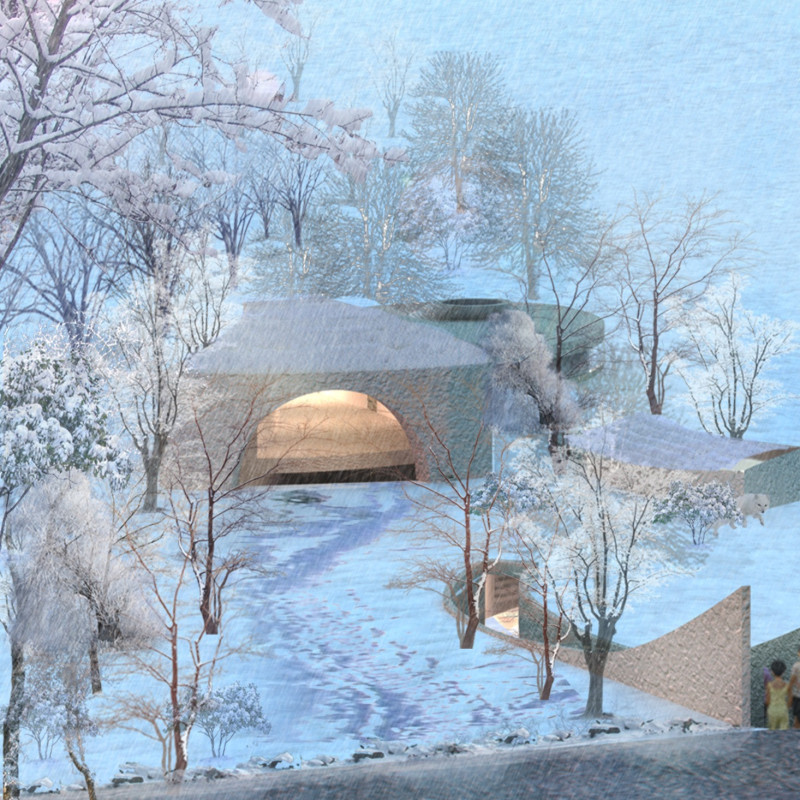5 key facts about this project
The Iceland Volcano Museum is situated on the Mid-Atlantic Ridge, an area marked by significant geological activity that shapes both the land and the culture of Iceland. The museum serves the purpose of educating visitors about the connection between volcanic events and their effects on the ecosystem and local traditions. The design concept highlights the dual effects of volcanic eruptions, incorporating both their destructive and restorative qualities in the surrounding environment.
Conceptual Framework
The design aims to provide an engaging experience that connects visitors with the history and impact of volcanic activity in Iceland. The layout reflects how magma changes form, guiding visitors through its journey from storage in the magma chamber to eruption. Each architectural element embodies the energy and dynamics associated with volcanic processes, immersing people in the narrative of nature's power.
Exhibition Hall Design
Central to the museum is the exhibition hall, which presents the sequence of volcanic activity. Here, visitors find representations of the magma chamber where magma builds before an eruption takes place, and the vent that facilitates magma's movement toward the crater where it erupts. The design captures the energy release linked to these events, helping visitors visualize the geological processes that shape the Icelandic landscape.
Historical Context
A multi-purpose gallery provides important context by exploring the historical narrative of Iceland's environmental changes. It discusses the impact of human activity, particularly during the Viking era, when extensive forest use led to significant changes in land coverage. This section of the museum emphasizes the ongoing relationship between human actions and the environment, presenting the challenges that Iceland's ecosystems face as they adapt to both natural forces and human influences.
Virtual Reality Experience
An innovative feature of the museum is the integration of virtual reality technology. This allows visitors to imagine future environmental shifts over the next hundred years. By offering this interactive experience, the museum encourages reflection on climate change and ecological restoration and connects viewers to the broader themes of the natural world.
Volcanic ash is incorporated into the design as a material that highlights the geological context of the region. It serves as a reminder of the natural processes that shape the environment, reinforcing the connection between the structure and the landscape that surrounds it. Each element of the design works together to communicate the ongoing relationship between nature and human experience in Iceland.






















































